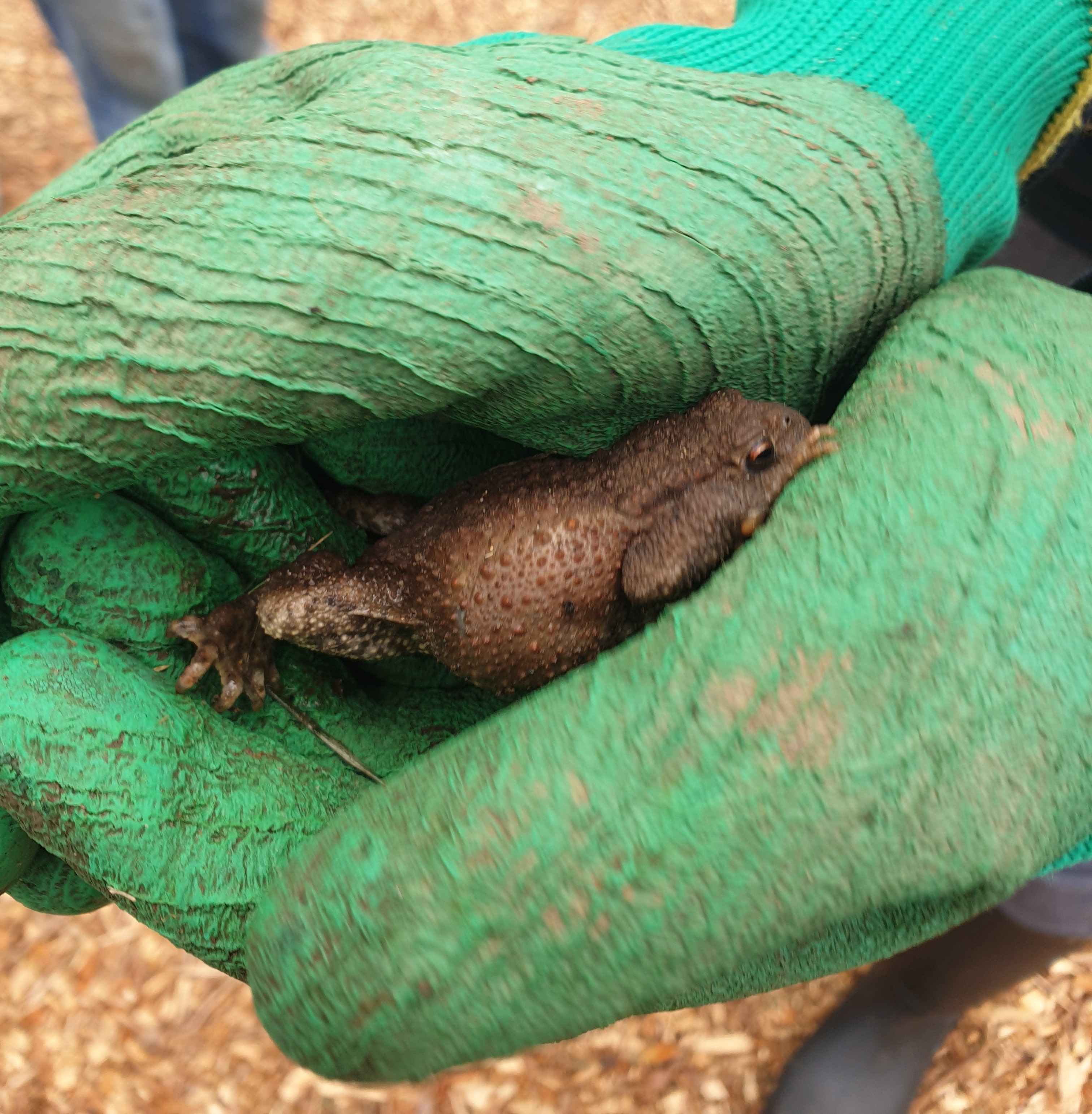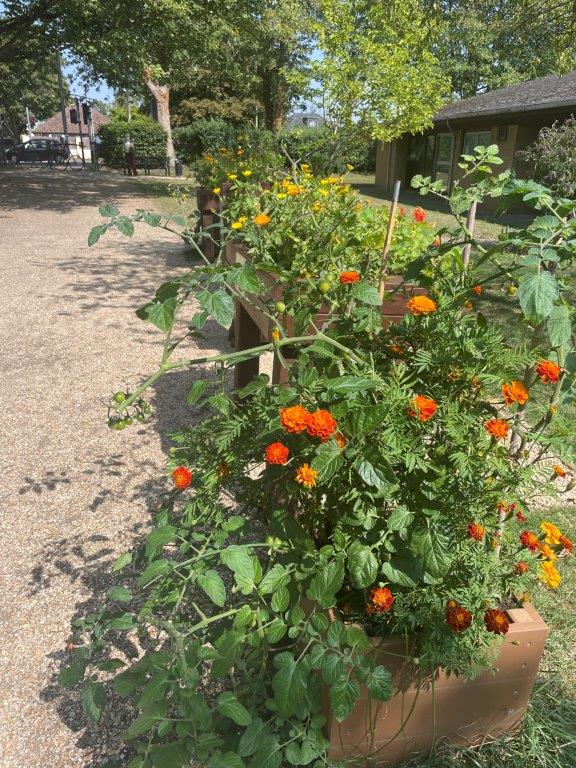Allotments and community farms are important small-scale growing spaces where local communities can connect with the food that appears on their plate. There are over 60 allotments across Oxfordshire county, with the majority of these centred around our urban towns and city.
Humans are not the only occupants of these spaces - the plants that are grown as food in our productive spaces are inherently good for wildlife, from the flowers that provide pollen and nectar for foraging insects, to spaces under garden sheds that act as a dry shelter for hibernating hedgehogs.
Allotments are important green spaces for our wildlife populations – often providing high quality green stepping stones across our landscape, especially in urban areas. Their varied habitats such as grassy areas, compost heaps, ponds, areas of scrub and fruit trees; create a mosaic that support a wide range of species. Allotments are, for example, perfect areas for the slow worm, one of our native reptiles, to inhabit; compost bins are great areas for them to bask and give birth to their young, and allotment beds are full of their preferred food of slugs, snails, spiders and earthworms. Birds such as robins can be spotted foraging in amongst productive spaces – the insects that flowering fruits and vegetables attract are tasty snacks for our feathered friends, and the turning of the soil will expose worms and other ground-dwelling invertebrates that bolder birds will swoop in to eat. The hedgerows that often border allotments provide safe linear navigational habitats for species such as hedgehogs on the ground and bats in the skies. There are of course conflicts – gardeners are often battling rabbits with chicken wire, and various insect pests with increasingly organic methods, but generally wildlife keeps to itself on our productive spaces, and where an insect pest appears there is also an opportunity to attract its predator!

There are great examples of how productive spaces are leaving spaces for nature with benefits for both people and wildlife in Oxfordshire. Oxford City Farm allow wildflowers to grow in the margins and have planted scrub areas to attract pollinators. They also have a shrubby pond which is used as a peaceful place for the site’s users and wildlife alike, and they plan to put up an owl box to encourage raptors to the site. Within Hazel Walk Allotment in Kidlington, there is a small community garden overseen by local growing spaces volunteers that is managed with wildlife in mind – the volunteers maintain a productive woodland edge habitat, with features such as a hedgehog house and native, pollinator friendly planting to attract wildlife. A path and bench within the site invite allotment users to sit in the tranquil space and enjoy the birdsong that can be heard there.
.jpg)
Some effective ways we can integrate nature into our productive spaces include the following;
• Companion planting – this is where a plant is grown alongside a crop to either repel or confuse a pest, or to attract a predator of the pest; some also have antibacterial or anti-fungal properties. These can benefit wildlife as well as serve their crop-related purpose – for example, plants suggested for deterring aphids include marigolds and nasturtium, which are great for a wide range of pollinators.
• Creating ponds – adding even a small bucket-sized pond on a growing space creates a whole new ecosystem on a site. A pond will attract amphibians, which act as excellent slug control, and foraging birds will also visit to drink.
• Adding artificial nesting opportunities – putting up a bird or bat box is a simple way of creating space for nature. Birds will forage for insects within a growing space, reducing pest loads. Bug hotels are also great for solitary bees.
• Create deadwood piles – these will create a home for a wide range of insects, and you may even be lucky enough to get a slug-eating hedgehog residing within larger piles
• Avoiding the use of pesticides – spraying chemicals on plants puts bees, butterflies and other pollinators at risk, and can reduce overall soil health and invertebrate diversity. Predators of any targeted pests will also be affected by any toxins added to the environment, and their populations will decline and be less effective at controlling them over time. Opt for organic options where possible.
